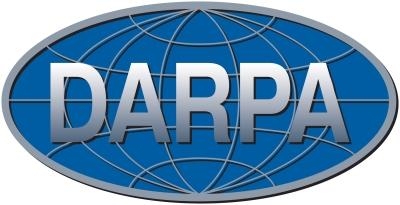Sun, May 10, 2015
Designed Micro Air Vehicle Capable Of Chemical Detection
The U.S. Air Force Academy won the Defense Advanced Research Projects Agency's Innovation Challenge for the second year in a row, Academy officials said May 6.

Lt. Col. Tim Jung, an Academy aeronautical engineering professor, led a team of 10 cadets who won the challenge with their design of a micro air vehicle that can sniff out chemical concentration levels in an explosive cloud.
"There are countries that have stockpiles of chemical weapons," said Dr. Jim Solti, the Academy's chief scientist. "We can't target those stockpiles because we can't say for sure it won't release a poisonous cloud that will drift and harm U.S. forces or civilians."
The research team has started to solve this problem by creating a micro air vehicle and delivery system that is deployed from a canister. The canister releases hundreds of sensors in waves so a significant portion of the poisonous cloud is covered.
"That's really what's innovative," Jung said. "If we know exactly where the cloud is, we can deploy them quickly. If we don't have very precise information, we can deploy (the micro air vehicles) slowly."
It's the second year Academy cadets have worked to find the right solution to measuring chemicals after explosions, a problem the Defense Department has tackled for years.
"Currently, we fly a single drone inside and it measures very little," Solti said. "It could miss all the chemicals completely. It's like taking a soda straw-size sampling of a football field and saying you know the exact makeup of the football field, based on that single sample."
Known as the Sensing Unguided Recon Gliders (SURG), the team competed against two other Academy teams and teams from the U.S. Military Academy and the U.S Naval Academy.

DARPA officials designed the Innovation Competition to challenge cadets and midshipmen at the military academies to solve perplexing problems with innovative solutions.
"We were surprised when we won," Jung said. "There were teams that had some really excellent engineering. Our solution met the criteria. It was beneficial to the warfighter and innovative. I had a great team of cadets this year -- the right mix of fun and really hard work. They fully embraced this project."
Next year, Jung plans to have cadets design parachutes for the gliders so gusts of wind can't blow them off course.
"They're unguided," he said. "So wind can blow them out of the cloud and they can hit each other. We want them to be inside the cloud, sampling the air. I'm thinking some sort of parachute could help them glide more smoothly."
Last year, Lt. Col. A.J. Rolling, an Academy assistant professor of aeronautics, and his cadet team won for the challenge a patented engine-and-wing design for aircraft that could save millions in fuel costs by redirecting excess air into the engine, increasing thrust while also reducing drag.
The cadet researchers are Cadets 1st Class Alex Carlson, Bobby Larson, Dan Putney, Andrew Miller, Ryan Lynch, Richard States, Ian Day, Josh Castagnetta, Dylan Juedeman and Aaron Macy.
More News
With Testing Soon Complete, Launch Preparations Begin in Earnest Sierra Space's Dream Chaser has been put through the wringer at NASA's Glenn Armstrong Test Facility in Ohio, but w>[...]
Takeoff Roll The process whereby an aircraft is aligned with the runway centerline and the aircraft is moving with the intent to take off. For helicopters, this pertains to the act>[...]
“We’re proud of the hard work that went into receiving this validation, and it will be a welcome relief to our customers in the European Union. We couldn’t be mor>[...]
"Aircraft Spruce is pleased to announce the acquisition of the parts distribution operations of Wag-Aero. Wag-Aero was founded in the 1960’s by Dick and Bobbie Wagner in the >[...]
IDENT Feature The special feature in the Air Traffic Control Radar Beacon System (ATCRBS) equipment. It is used to immediately distinguish one displayed beacon target from other be>[...]
 Sierra Space Repositions Dream Chaser for First Mission
Sierra Space Repositions Dream Chaser for First Mission ANN's Daily Aero-Term (05.10.24): Takeoff Roll
ANN's Daily Aero-Term (05.10.24): Takeoff Roll Aero-News: Quote of the Day (05.10.24)
Aero-News: Quote of the Day (05.10.24) Aero-News: Quote of the Day (05.11.24)
Aero-News: Quote of the Day (05.11.24) ANN's Daily Aero-Term (05.11.24): IDENT Feature
ANN's Daily Aero-Term (05.11.24): IDENT Feature




